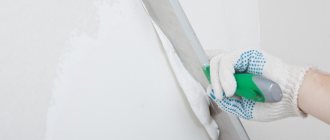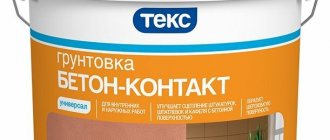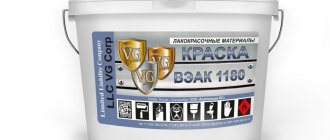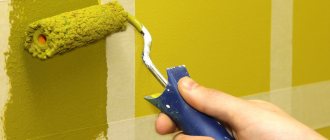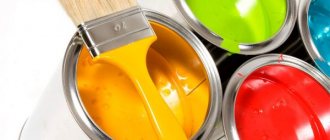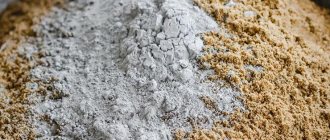Drying oils are liquid film-forming compositions, which are products of processing vegetable oils or fatty alkyd resins with the addition of driers to speed up drying. Drying oil is intended for the production of thick, ready-to-use oil-based, alkyd paints, as well as for diluting these paints and bringing them to working viscosity before use. Drying oil has some uses for impregnation and priming of wooden surfaces before painting.
What is drying oil
A film-forming agent, which is produced in accordance with GOST 7931-76 on the basis of such natural oils as:
- rapeseed;
- soy;
- linen;
- sunflower;
- hemp.
It is a clear liquid that can smell or stink pleasantly, and is sometimes dark red in color.
Cobalt, manganese, and lead siccatives are also added to the composition, accelerating hardening.
Specifications:
- Drying time is a day.
- Drying temperature – 23°C.
- Giving a golden glossy hue to the treated surface.
Technical characteristics of natural drying oil.
Types and brands of oil drying oils
Oil formulations are produced through filtration and special heat treatment from vegetable oils. Drying agents are added to the resulting composition in small quantities. They can be salts of various metals, for example, manganese, iron, lithium, zirconium, cobalt and others.
If the drying agent contains compounds of several metals, then the drying oil drying rate increases significantly.
In oil drying oils the content of driers is insignificant, since with their excess the coating very quickly darkens and becomes brittle, i.e. begins to collapse.
Divided into:
natural. GOST 7931-76, natural drying oil (we carefully study its technical characteristics before purchasing), consists of plant oils (flax or sunflower). It contains up to 97% of these oils. The remaining 3% is occupied by the drier. It is divided into polymerized and oxidized (oxidized). Oxidized drying oils have a slightly darker color than polymerized ones, and surfaces coated with them age faster. It has a black-brownish color. It is an opaque liquid with a thick oily consistency and a slight odor. It is used for preparing thickly rubbed paints, as well as for impregnating all wood products inside buildings;
drying oil oxol , its GOST 190 78 (technical characteristics are indicated on the label) - this drying oil differs from natural drying oil in that it contains a solvent such as white spirit. The oxol contains 55% oil, 5% drier, and the rest is white spirit. It has a very strong and unpleasant odor, which is given to it by the solvent. It remains on the treated surface for quite a long time. In appearance and in its properties, oxol is almost no different from natural drying oil, but is much cheaper. Oxol is produced in the PV and V grades. They differ in that “B” uses hemp or flax oil, and “PV” uses other oils, including petroleum-polymer resins (petroleum-polymer drying oil is a by-product of the petrochemical industry). When using the PV brand, you must wear gloves and a respirator. Drying oil grade B is not used for painting floors. Oxol can be used both inside and outside the building;
combined drying oil. It is obtained by mixing and oxidizing oils from various plants or differently processed, with the addition of a solvent or synthetic drying oils. Drying time is determined according to GOST 19007. Combined drying oil is used mainly for preparing paints, and not for diluting them. This type comes in several brands: K 2, K 4, K 3, K 5, K 12. Even numbers are used for indoor work, and odd numbers can also be used outside. For example, combined drying oil (grade K 3) consists of a small amount of drying agent, solvent (usually white spirit) and drying oils. It is transparent, yellowish in color. Complete drying occurs within 24 hours. It is recommended to use in small portions, as it quickly forms a film. It is used for preparing any oil paints and for impregnating wood parts, for mixing plaster. Combined drying oil (grade K 2) is slightly different in color from K 3, it is slightly darker. It is used in the same way as K 3, but for interior work.
They are based on synthetic substances, such as by-products from the processing of shale, oil, gas and other substances with the addition of the necessary components. There is no GOST for them; instead, TU is used.
Alkyd drying oils are used as a base for the preparation of paints. They are cheaper than oil ones, which is often the decisive factor in their favor. Composite drying oils are rarely used in the production of varnishes and paints, since the resulting coating is of low quality. Due to some toxicity and a pungent odor, they are used outdoors.
Synthetic drying oils differ from natural ones in their long drying time and have no color. But be careful when purchasing such a composition: there may be surprises. If there is even a small amount of fus (vegetable oil sediment), then the drying time of the paint of which it is a component can take years. Moreover, such paint may not dry at all. The presence of fuse can be determined by its characteristic reddish color and the presence of a dark sediment.
Historical facts
Several centuries ago, amber and other resins were added to natural oil. The resulting composition was used to treat wood to protect it from moisture. It was also used by artists in the design of paintings, icons and plaster products. With the development of the chemical industry and the development of other protective agents, many industries abandoned drying oil (especially its use in apartments), because as new paintwork materials had high quality indicators and low cost. Now it is used for finishing wooden products and impregnation before painting.
Flaxseed oil
This is a transparent solution with an oily structure, the main component of which is linseed oil. This liquid also contains a small amount of drier.
Flaxseed oil is successfully used to treat various wooden surfaces both indoors and outdoors. If necessary, linseed oil can be used to dilute putty, various putties, paint, and so on.
The drying oil drying period is about a day, provided that the air temperature is about 20 degrees Celsius.
Operating principle
Once applied to wood, the product saturates it and fills the pores. The oil then dries and prevents water from penetrating into the material.
As a result, bacteria do not infect the product and it does not deteriorate.
In open air, the oil thickens due to the presence of acids in it. Drying oil applied in a thin layer dries to form a durable film. To speed up the hardening process, vegetable oils are subjected to heat treatment and driers are added to them.
Compositions without metal compounds are used less frequently. Their drying speed is 5 days, which allows the oil component to penetrate deep into the wood, thereby increasing its moisture resistance and ability to resist fungus and insects.
Impregnation with drying oil
Both impregnation and painting are carried out on a dry, prepared base (without dust, dirt, grease and old layers of finishing). Apply drying oil with a roller or brush, small parts - with a thin brush soaked in a foam swab. Often you need to do two layers, between which you must completely dry for at least a day.
To seal cracks in wood, Oxol is mixed with sawdust 1:1 and the defect is filled with a spatula - it takes a very long time to dry, but the result is excellent: the blockage is almost eternal and is not afraid of moisture.
How to dilute drying oil?
Drying oil is an oil that can thicken. A simple experiment: pour a little drying oil into a saucer and leave it in the sun - very soon only an oil film will remain. The drying oil is diluted with white spirit, turpentine, castor oil, alcohol, solvents for oil paints and organic acids. It is dangerous to use an “untested” solvent. Dilution – ten parts of drying oil to one part of solvent. Important: all drying oils are flammable, and a reaction with the solvent is possible, leading to fire.
How long does it take for drying oil to dry?
The standard drying time is 24 hours. The best working conditions are temperatures from 15 to 20 degrees and humidity up to 75%. The colder and more humid the air, the slower the drying oil dries.
The secret to quick drying of drying oil is the high content of linseed oil, which contains the most linoleic acid (up to 80%) and hemp oil, which contains slightly less linoleic acid. Sunflower, poppy and other oils contain even less linoleic acid (40-50%). Sunflower oil reduces the rate of hardening of the oil film, and the drying oil will tolerate moisture less well. To quickly thicken (one day) the drying oil layer, manufacturers add potassium permanganate. Therefore, information about the composition of the drying oil on the product packaging is very important.
It is important to remember that drying oils are very flammable (even capable of spontaneous combustion at temperatures of about 200 degrees), and do not store drying oils near flammable materials.
Areas of application
The main purpose of the product is wood processing. It is also used in the production of paints, finishing agents, putties and primers.
Drying oil can be used for processing wooden structures.
Area of use:
- Processing of wooden elements of houses (windows, doors, floors, stairs, railings).
- Priming surfaces before painting.
- Making hives.
- Shipbuilding.
- Furniture repair.
- Thinning paints and varnishes.
Paint production
To improve the quality of coloring elements, it is necessary to add binders to them. Due to this, the mass will lie flat and will not crumble.
Compositions diluted with drying oil are of high quality, form a hard coating, and can be used for interior work, because do not emit toxic substances.
Surface treatment
Wood is widely used in construction and finishing, but due to its low durability it must be treated to protect it from damage. Drying oil helps reduce paint consumption. It is also used to prime plastered and metal surfaces to prevent corrosion.
Application and properties of drying oils
Drying oil is used to protect or coat the surfaces of materials to be painted. In the process of processing external wooden coatings, natural compounds are used extremely rarely. And why? Firstly, the use of such drying oil is quite expensive, and secondly, in terms of stability it is significantly inferior to more modern means. For outside work, alkyd drying oil or oxol, which is more resistant to the destructive effects of natural factors, is suitable.
It is better to treat wood finishing indoors with natural products. They have almost no odor and do not release toxins into the environment. Given the high cost of natural drying oil, it is sometimes replaced with alkyd or oxol. After such treatment, the room must be ventilated throughout the day.
Composite impregnation not only smells unpleasant, but also releases toxins. The question arises: “Why is this kind of drying oil needed?” This composition is used to treat external wooden coverings or wooden products in rooms that are not intended for residential use.
The ability to emphasize the structure of wood and give it a certain shade allows the use of oil compositions as stains. To obtain the desired shade, color is sometimes added to the drying oil. After this treatment, it is not necessary to additionally paint the surfaces.
Some metal surfaces, such as galvanized steel, are treated with polymer impregnation. It is part of the primer used in the process of preparing plastered walls for painting or wallpapering. Oil compositions are used to make putties, in which they act as a binding element and make the product more elastic.
It is better to treat wood finishing indoors with natural products.
Types of drying oil
"Cooked butter" is classified according to its components:
- natural;
- semi-natural;
- synthetic.
Oxol, combined, alkyd and composite drying oils are often used.
Oily
The natural product consists of 97% vegetable fat. During its manufacture, the composition is cooked at a temperature of 300°C for 12 hours. After this, you get a dark, thick liquid with a slight smell of the oil used.
The selected plants produce different remedies:
- Flax is a transparent and oily substance.
- Hemp is a dark liquid.
- Sunflower is a light drying oil that takes longer to dry and is inferior in strength and water resistance to other oils.
Alkyd
This type is obtained as a result of thermochemical processing of two types of oils:
- semi-dry;
- non-drying.
This allows the product to dry faster, giving it hardness, strength and durability.
Alkyd is divided into:
- pentaphthalic;
- glyphthalic;
- xyphthalic.
Types of alkyd-based impregnation.
The accelerated hardening process of such materials allows the treatment of surfaces exposed to aggressive environments (temperature changes, precipitation, solar radiation).
They should be used only as a pre-treatment, then the surface should be painted.
Composite (synthetic)
Thermopolymer compositions are produced by refining petroleum. This type is the cheapest and most effective, therefore it is widely used in various fields. Since there are only specifications for these drying oils, the composition varies.
Common types include:
- Slate. It is obtained by oxidation of shale oil followed by dissolution in xylene.
- Ethinol is a clear liquid with an unpleasant odor that does not go away for a long time. The composition dries quickly, the film is hard and resistant to alkali and acid. You can get rid of the smell by ventilating building structures and chemical equipment.
Where is drying oil used?
Drying oil for wood is the main use of the heroine of the article. By impregnating the cellulose fibers, the oily liquid not only protects them from rotting, fungi and insects, but also decorates them.
The color of the mixture is transferred to the wood, emphasizing its structure. In other words, buy drying oil as a stain. The only difference is that classic stains are water soluble and were invented in the 19th century. Drying oil is not diluted with water and has been known to mankind for millennia.
Metal products are also coated with drying oil. Alloys, like wood, protect against moisture. It oxidizes metals. This is the cause of rust. Some alloys are not subject to it, for example, the noble group, aluminum and zinc.
But non-galvanized steel deteriorates from atmospheric moisture. By forming a waterproof film on the surface of the metal, drying oil extends the service life of products made from it.
In interior decoration, drying oil is used as a primer. This is the name given to compositions applied to walls prepared for a finishing coat, for example, painting.
By covering the plastered surfaces with a thick film, drying oil blocks the penetration of pigments into the walls. As a result, the whiteness of the finishing plaster is maintained and paint consumption is reduced.
True, the savings are imaginary. Natural drying oil is expensive. For every square meter of plastered walls, 80-150 milliliters of an oily mixture are used. This is when priming in 1 layer. It is recommended to apply drying oil in 2 layers.
Before painting with drying oil, you can cover any porous surfaces, even a sponge. Paints adhere better to an oily film. The problem is that the final coating does not hide the acrid smell of drying oil.
Its “aroma” disappears within a few days. Buckets of water placed around the room can speed up the process. By the way, a pungent odor is characteristic only of composite drying oil. We will explain what the concept means in the next chapter.
Drying oil is used as an additive in oil paints and putties. The latter can be made at home using crushed chalk, plaster and wood glue. You will get the most natural and reliable composition.
Drying oil protects wooden surfaces from moisture and rotting
Drying oil in it is a bonding agent. By binding loose masses, the oily substance facilitates the application of putty and its adhesion to the surface. Plus, drying oil blocks the development of mold on a layer of chalk and gypsum. Fungi attack plaster and putties, just like wood.
Criterias of choice
Knowing the following nuances will help you choose the appropriate option:
- Natural drying oil has a dark brown color, without sediment.
- The label contains a full description of the composition, information about the manufacturer and instructions for use.
- A high-quality product is transparent, without sediment, with a shade from light to dark brown.
High-quality natural drying oil has a dark brown color.
Semi-natural drying oils
Representatives of this species also received their second name “oxol”; technologically they are also made from oils, but subjected to oxidation, with the addition of solvents and driers. In this case, the percentage of oil is 55%, the solvent (white spirit is most often used) is at least 40%. Due to this composition, the liquid has a rather unpleasant and pungent odor, which can persist for some time even after drying.
In terms of cost, oxol is much more economically profitable than natural, but at the same time it has practically no differences in basic properties and is almost identical in appearance.
The most valued is oxol made from flax oil - the film of such a product is hard, elastic, water resistant and, notably, has the greatest durability.
To reduce the cost even further, it is also produced from sunflower oil, but its film characteristics are significantly lower than those made from flax oil.
Main manufacturers and prices
There are many different companies producing drying oils and paints and varnishes:
- LLC "Planet of Taste" It has modern specialized equipment and uses advanced technologies. The company carries out constant quality control.
- Paintwork. Founded in 1996, it produces and sells acrylic paints, enamels, drying oils, gypsum, mastic, and window putty. All products have the necessary certificates of conformity.
- . Produces high-quality paints and varnishes. There is a cumulative discount system. Wholesale customers are provided with special conditions. You can take trial samples of materials for free.
- LLC "NIK-Market" Located in Yekaterinburg. The main direction is paints and varnishes.
The cost of drying oil depends on its quality, type and manufacturer. Prices range from 70 rubles. up to 300 rub. for 1 l.
Combined drying oil
The method for producing combined drying oil is somewhat different from other types of similar solutions. The oils necessary for the production of drying oil undergo polymerization and dehydration.
In addition to oils, the composition of combined drying oils includes special solvents and a small amount of driers. These liquids are used mainly for the manufacture of certain types of paints.
Technology of use
When treating surfaces with drying oil, the following steps should be followed:
- Preparation. Prepare the object for application of a protective layer or stabilization. Clean and degrease it.
- Application. Choose a wide and soft brush. Apply oil generously to better saturate the wood. Hot drying oil is used for deep processing.
- Drying. Dry the painted surfaces at a temperature of 20°C. It is recommended to avoid drafts.
You can scrub and wash the instrument with a solvent.
How to use drying oil correctly
The process of applying a protective agent is not particularly difficult. First of all, the drying oil itself is prepared - it is carefully shaken and, for ease of use, poured into another container. If the product has hardened, which sometimes happens when the seal of the package is broken, it is diluted. For this purpose, natural solvents such as white spirit are used. If you cannot dissolve the product immediately, you will have to add a solvent to it and then leave it overnight.
Using a brush of the required size, apply drying oil to the surface to be treated. If it is wood, the product is carefully rubbed into the pores. When using cheap protective compounds, the desired effect may not be obtained immediately. You'll have to do several layers.
The next layer is applied only after the first has completely dried, that is, when it stops sticking to your hands.
Considering the toxicity of drying oil and the difficulty of washing it off, it is recommended to have special work clothes and a respirator when working with it. After work, some objects and hands may become dirty. The question arises: “How to wash drying oil?” Almost any composition can be washed off with gasoline or solvent. Problem areas are wiped with a cloth soaked in one or another product, and after 10 minutes, washed off with water and detergent.
Considering the toxicity of drying oil and the difficulty of washing it off, it is recommended to have special work clothes and a respirator when working with it.
Precautionary measures
When carrying out work there is a danger of poisoning and fire.
It is prohibited to light an open fire or smoke in areas where drying oil is stored and used.
To avoid negative consequences, you should follow some rules:
- Work in protective clothing, glasses, gloves, and a respirator.
- Remove fire hazardous objects.
- Place waste (rags, containers) in a metal box.
- When working in a car, first empty the gas tank of fuel and disconnect the battery.
- No smoking.
- Ensure the availability of fire-fighting equipment.
Selection of drying oil
Before purchasing drying oil, you need to take a good look at what’s in the container. First, you should determine by color whether it corresponds to the declared type of product. In addition, you should carefully read the description of the components and check whether it complies with GOST if you purchase semi-natural or natural drying oil. They will have a certificate of conformity, but the composite one will only have a hygienic certificate. In general, you should be careful when using the latter, since it is toxic and it is important to note that there should be no oil residues (the so-called fus) and osprey (oil refining residues) in it, otherwise the drying process will become endless. And finally, it should be noted - carefully inspect the liquid for homogeneity; there should be no sediment or mechanical particles present.
Making drying oil with your own hands
Some people make their own protective agent. To do this, you should choose any vegetable fat.
From sunflower oil
This drying oil is heated over low heat. After the foam has separated, it is necessary to increase the temperature from 170ºС to 280ºС. Then the cooled composition is filtered through cheesecloth. The purified product is ready for use.
From linseed oil
Manufacturing consists of several stages:
- Fill the container halfway with oil and heat over low heat (160ºC).
- Cook for 4 hours.
- After the water has evaporated, gradually introduce the drier (40 g per 1 liter of oil).
- Increase the temperature to 200ºC and cook for 3 hours.
The readiness of the composition is checked by applying 2 drops of the component to the glass. If the substance is transparent, then the solution is welded correctly.
To obtain drying oil from linseed oil, you need to slowly heat it until the water evaporates.
Cooking the old composition
Old drying oil is prepared using the same method as new one, only it should be stirred regularly so that the oil does not burn.
Natural drying oil
Drying oil mainly contains only natural, specially processed oils; the amount of additional, synthetic additives is negligible. Oil is obtained from various plants: flax, sunflower, hemp, rapeseed and so on.
Features of application
In order to apply drying oil, no special construction skills are required.
The technology is extremely simple for both repair and artistic work:
- Before application, the surface to be treated should be cleaned of traces of old coatings, grease and dust;
- The surface must dry, since using the composition on wet wood does not make sense;
- To apply the coating, a roller or brush is required - large, flat surfaces are treated with a roller, and small elements and corners are treated with a small brush;
- To achieve the required result, one or two layers are enough.
Some tips:
Thickened drying oil can be diluted with solvent or nefras. Drying oil must be thoroughly mixed before use.
This gives the structure increased saturation with the necessary oxygen. When carrying out interior work, it is extremely important to ensure maximum ventilation. It helps reduce drying time and remove unpleasant odors. When working, protect your hands from contact with the substance.
If you do get dirty, moisten your skin with vegetable oil and then rinse well with running water and soap. Remember that drying oil has a high fire hazard, so store it in places inaccessible to sparks, do not carry out welding work and do not smoke near the treated surface.
Composition consumption on wood
The following stages of application are distinguished:
- Preparatory work. The surface must be cleaned of dust and degreased, then completely remove traces of moisture;
- Application. For DIY processing, a brush with soft bristles is best; for large volumes of work, you may need a roller or paint sprayer. Drying oil must be applied quite generously, otherwise the wood fibers will not be able to be completely saturated. For deeper impregnation, hot drying oil is used. Typically, 130 ml of drying oil is enough to treat one m2 of surface. The number of layers may vary, most often a coating of 2 - 3 layers is sufficient;
- Drying. The optimal conditions for quick drying of drying oil are considered to be an air temperature of 20 degrees Celsius and the absence of drafts. On average, wood impregnated with drying oil dries completely after 24 hours.
Good to know: leftover drying oil and used brushes must be disposed of, as these materials have a high degree of fire hazard. Drying oil residues should be stored away from electrical appliances and open flame sources.
Enamels and oil-based paints often have too thick a consistency, making it difficult to paint anything with such a composition. In this case, the paint must be diluted by adding the required amount of drying oil until the composition reaches the desired consistency. Among other things, this technique can significantly reduce paint consumption and save money.
Drying oil price
The price of drying oil , first of all, depends on volume. That is, the larger the volume, the more you will pay for the packaging. Decide on the type of composition used, as well as the manufacturer. If the drying oil is odorless, it will cost more. On average, for a 0.5 liter package you can pay from 80 rubles.
It is not worth buying cheaper, as there is a risk of purchasing a low-quality product. Further, it all depends on the volume, as well as on the naturalness of the material. Natural drying oil is not always more expensive, since synthetic varieties have certain properties that are suitable for specific types of surfaces. Check the price of drying oil with manufacturers, consult in stores, choose only the compositions you need.
Application area
Drying oil is used in finishing matters. At the same time, it is used to color wood. It is worth considering that drying oil is very different from varnish. Firstly, it is a film that forms on the surface. Secondly, when applied, drying oil does not raise the wood fibers at all, which will not require additional processing later. Thirdly, it retains its properties better after years.
That is why it is customary to finish floors and walls with its help. Only in the case of finishing the floor, you need natural drying oil , since it is better than others able to resist the loads of intense walking. As for the issues of wall decoration, drying oil is unique here. It is convenient to use here because you can add various pigment shades, which will allow you to diversify the walls and achieve ideal results.
Today there are examples and varieties of drying oil that can be used not only for direct contact with wood. For example, it is often used to protect metal from rust by coating the surfaces of metal structures. It is applied to walls that are plastered, which allows it to be used as a primer.
Oxol drying oil consumption per 1 m²
We recommend reading our other articles
- Advantages of building houses from modern sandwich panels
- The attractiveness of facade cornices made of foam plastic
- Drying is an important stage in the production and preparation of lumber for sale.
- Drum Sanding Machine
Before using Oxol drying oil, you need to know the consumption per 1 m². Depending on the type of substance, consumption may vary.
- When treating surfaces with grade B, you need to take into account a consumption of 80-120 g/m².
- When working with the PV category, the consumption per 1 m² is 100-150 g.
The fact is that in different cases one or more layers of drying oil are applied to wood or putty. Many factors influence consumption. For example, old wood or plaster will require more drying oil for impregnation. And even the type of tool with which it is applied can affect the consumption - with a brush it is less than with a roller. In addition, sometimes you need more product, sometimes less to thin the paint
